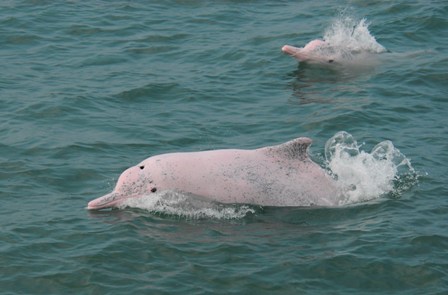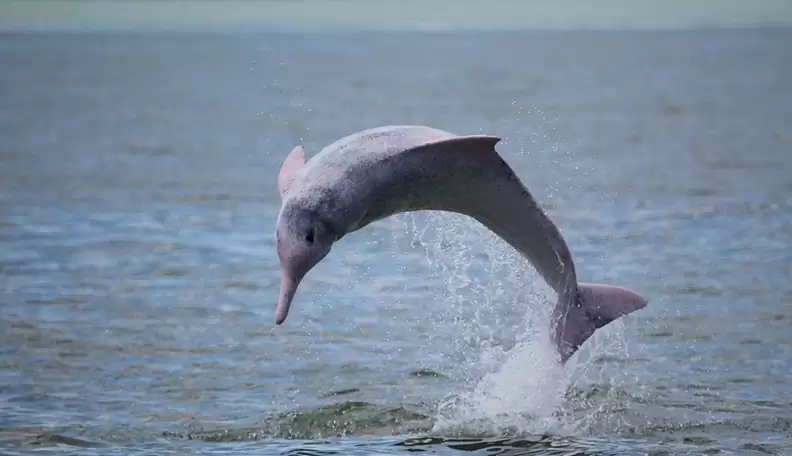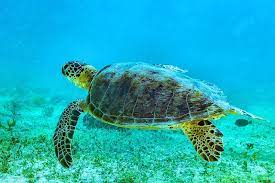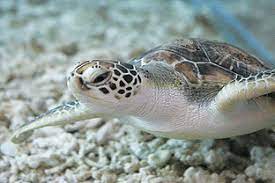
|
|
Description of OceanOcean is a super common setting in literary works. It is normally referred to as the heartbeat of the earth. A deep blue water with shimmering turquoise waves. It is rather difficult to deny the beauty of the ocean. However, it is soon that we will no longer be able to take a glance at this astonishing landscape. Not just the sea but the animals depending on it. Before we actually go through those problems, let’s talk about what this deep blue area is. In a relatively simple way to explain the area, the Cambridge dictionary has an instinctive definition. It declares that the sea is “the large mass of salt water that covers most of the earth’s surface.” Many divers hid under the horizon of the cerulean surface. The support it provides to the ecosystem is not imaginable, it not only keeps the diversity of the population, but it helps control the planet’s climate. Ocean is considered to play an essential role in regulating the earth’s temperature. It helps trap approximately 90% of the heat that humans created. Furthermore, it supports and provides resources for human activity. Valuable resources include fish, minerals, oil, and natural gas. Having those important materials help economies to circulate. |
Reasons for Extinction |
The ocean is a place that many people consider a beautiful sight. The sound of the wave brought people peace. It might be a relatively unfamiliar part of the world compared to land, river, or estuary, but we all know that the ocean gave lives to tens of thousands of living creatures. I believe many are also aware that a lot of the marine lives are in extinction. There are many causes of this situation. Some of the most obvious examples can be global warming and plastic pollution. Coral bleaching had been severe these few years because the water had been warmer than before. The large number of plastics are dumped into the sea, letting some creatures such as sea turtles to accidentally eat them because they thought the plastics were food. While these directly affect the health of marine animals, oil spills can influence large parts of the sea, which in turn destroys many living animals’ habitats. Human’s development around the coast also has an impact on marine life. Since it increases the population around the area, it makes the marine animals more difficult to survive, because we basically took their habitat from them. It’s quite similar to a chain reaction. Coastal development, climate change, and tourism contributed to the death of coral reefs or mangrove swamps. This resulted in affecting more creatures, because coral reefs and mangrove swamps are the home to many. You might not know, but noise pollution is another cause of extinction. When there are human activities under water, the huge sound created can affect marine species’ navigation or communication. Take dolphins as an example, they communicate with each other and find food with sound, so this can affect them severely. The reasons listed above are just some causes of marine lives’ extinction, there are still a lot more to change in order to at least protect the living creatures underwater from dying and keep the ocean’s beauty.
 - leaves.png)
|
Chinese white dolphins, scientifically known as Sousa chinensis, have streamlined bodies, broad dorsal and pectoral fin bases, and thick tail trunks. As dolphins grow older, they gradually turn light gray from gray-black when they are babies. Their bodies have obvious spots from adolescence through sub-adulthood. The spots fade as they age, and almost the entire body becomes white. It is also known as the pink dolphin in Hong Kong due to the fact that the blood vessels expand when exercising and turn pink. The length of the adult body is between 2-2.6 meters, while the weight is between 150-230 kilograms. The majority of groups consist of fewer than 10 individuals, but sometimes groups of 20-30 individuals gather. Bottom-dwelling kingfish and surface schooling fish are primarily the main food sources. The Chinese white dolphin mainly inhabits tropical and temperate waters between the eastern Indian Ocean and the southwest Pacific, including China, Hong Kong, Malaysia, Thailand, etc. There are white dolphins in Taiwan that live along the coast. Most of them live in shallow waters that are no deeper than 20 meters. From Hsinchu to Tainan, the western waters of Taiwan are home to the majority of the population. Chinese white dolphins are also present in Kinmen waters in small numbers. Chinese white dolphins inhabiting the Pearl River Estuary are quite unique: the estuary has the highest concentration of Chinese white dolphins in China, and it is also one of the most heavily trafficked and polluted places in the world. As a result of environmental degradation and habitat loss, Chinese white dolphins face serious threats to their survival. Western waters around Hong Kong are home to dolphins. This species has a limited range and a small area. The reclamation of waters has led to the loss of more than 1,400 hectares since the mid-1990s. Aside from affecting dolphin habitat directly, this also affected the surrounding environment. The dolphins' food supply is reduced as other fish grow. Furthermore, ocean and sound pollution, as well as increasingly frequent traffic, as well as endless dredging, dumping, and large-scale construction threaten marine ecology. |


|
In addition to being long-lived and slow-reproducing, white dolphins live near land. They have been negatively impacted by human activities and coastal development, so their numbers continue to decline and they are on their way to extinction. Globally, the population is rated as Vulnerable (VU). By IUCN, the Eastern Taiwan Strait ethnic group in the western waters of Taiwan is classified as [Critically Endangered] (CR), and their numbers continue to decline. The Kinmen Sea also has a small population of white dolphins, as determined by a brief survey. Approximately one-fourth of infants and young children survive to age 6 due to man-made threats, so natural growth cannot keep up with the numbers of dolphins that become extinct every year. Recent years have seen a large number of stranding incidents, and conservation is of utmost importance.
|
|
About VaquitaVaquita, one of the most endangered Porpoises, inhabits the Gulf of California. In 1997, 570 of them were discovered. However, throughout the year of local illegal fishery on Totoaba macdonaldi, Vaquita is severely harmed along, now ending up with having only ten left. Not only the local, but the fact that both drumfish and Vaquita are having excessively high prices in the global market has largely worsened the illegal fishing situation. To put into context. In 1948, the International Whaling Commission (IWC) carried out the International Convention for the Regulation of Whaling to protect the few that still exist. In 1982, they further forbade commercial whaling. Very concerningly, this resolution did not stop Norway, Iceland and other countries from stopping whaling. It is even followed by a withdrawal of Japan for themselves to continue whaling without regulation from the IWC. For human selfishness, Vaquita became the most endangered marine animal, with IWC also declaring their first Extinction Alert on them. The process of making humans realize that they are killing an entire animal species is more than frustrating that Joe Biden even considered imposing sanctions to resolve this matter. Now that the Mexico navy has been working with governmental organizations, enforcing the zero-tolerance region, the situation has been slightly leveled, however, still pressing. This process of recovering, not only teaches our team on the difficulties of saving animals’ life back, but more on how it is still possible. It inspired us. We, our team, see the hope more than the difficulties, and genuinely hope that our effort would contribute to the global plan of raising awareness |
About Hawksbill Sea TurtleThe Hawksbill Sea Turtle, known for its distinctive hawk-like beak, thrives in tropical and sub-tropical waters across the Atlantic, Pacific, and Indian Oceans, serving as a vital element of marine ecosystems. Preferring coastal areas with abundant sponges and accessible sandy nesting sites, these migratory reptiles contribute to the health of coral reefs. Unlike other sea turtles, they have a unique diet, primarily feasting on sponges, though they also consume mollusks, marine algae, crustaceans, sea urchins, fish, and jellyfish. Sporting mottled shells with irregular shades of amber, orange, red, yellow, black, and brown, they have serrated edges and overlapping scutes, which offer them protection against predators. Comparatively smaller among sea turtles, hawksbills reach lengths of 2-3 feet and weigh 100-150 pounds. Their maturation takes 20 to 35 years, with a life expectancy of 50-60 years. Female hawksbills return to their hatching beaches every two to five years, laying three to five nests per season, each holding 130 to 160 eggs. Nesting typically occurs from April to November, with hatchlings emerging after about two months, navigating toward the ocean's brightness, a perilous journey. Sadly, hawksbill turtles face critical endangerment primarily due to human activities. These creatures have been prized for their tortoiseshell, leading to the killing of millions in the last century. Although international trade in hawksbill shells was banned in 1993, illegal trade persists. Additionally, their eggs are consumed worldwide, and they are hunted for their meat. Accidental capture in fishing nets and habitat loss due to coastal development further threaten their existence. Rising temperatures from climate change also endanger their coral reef food sources. |


|
Fortunately, hawksbills are protected from international protection agreements like CITES and the Convention on Migratory Species. Advocates work to safeguard their habitats through marine sanctuaries, while researchers gather data to raise awareness and improve conservation strategies within local communities. Overall, hawksbill sea turtles play a crucial role in marine ecosystems, and conservation efforts are vital to protect these endangered creatures and their habitats.